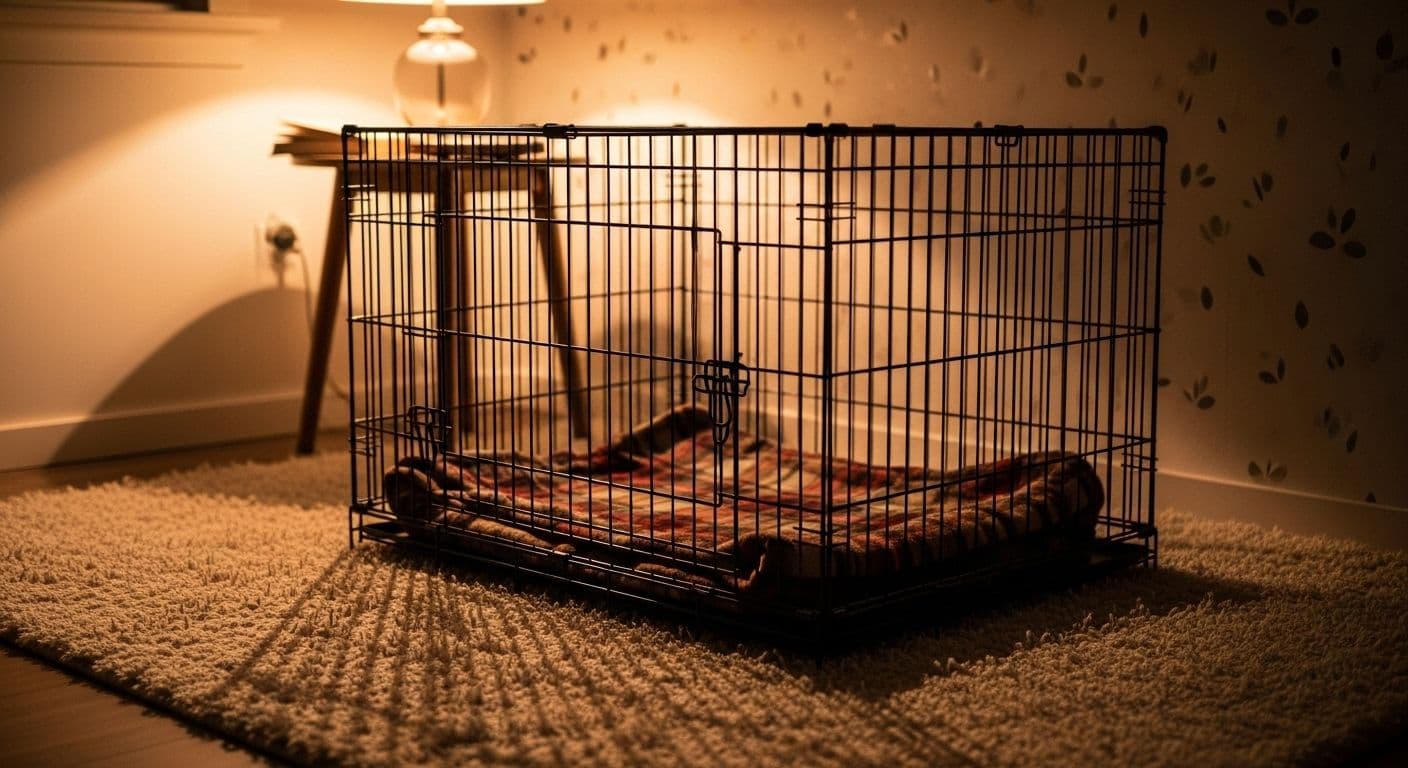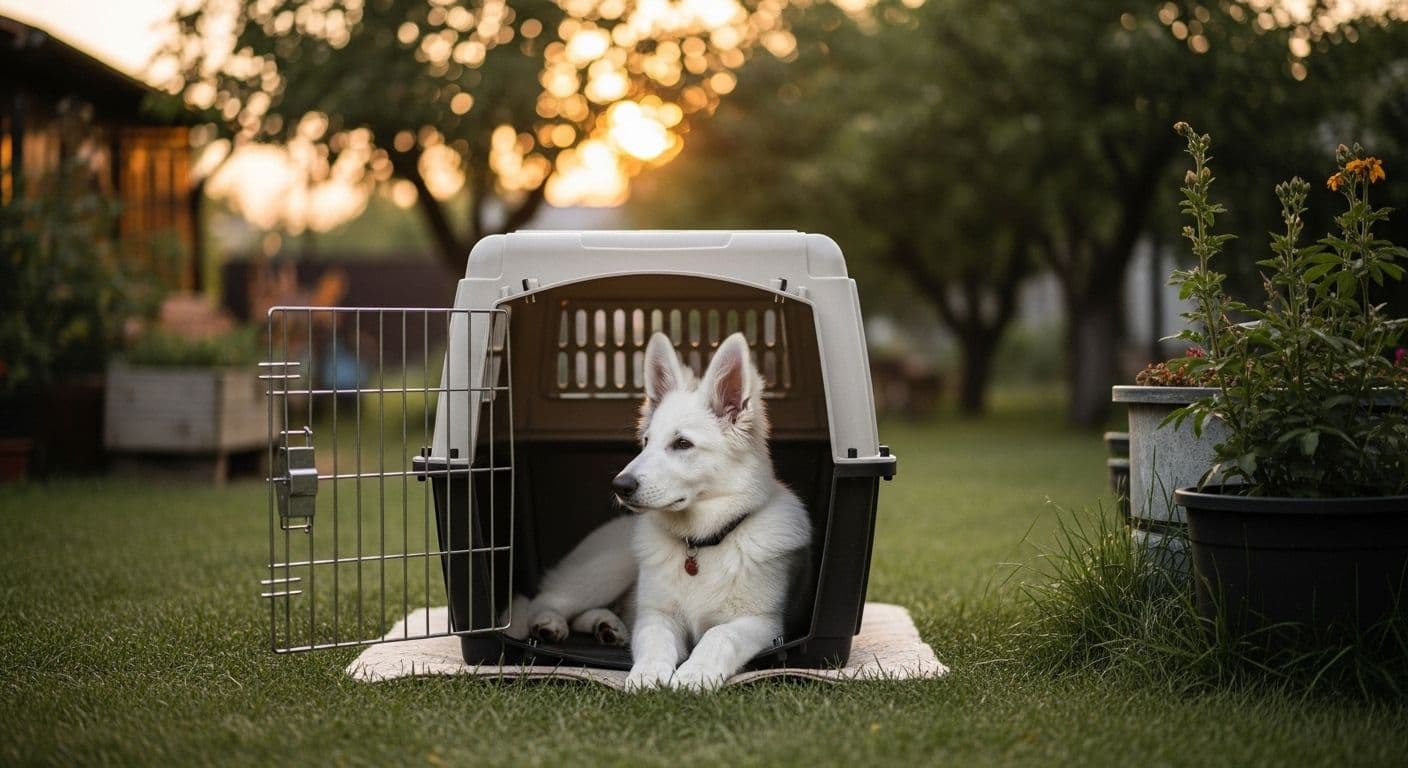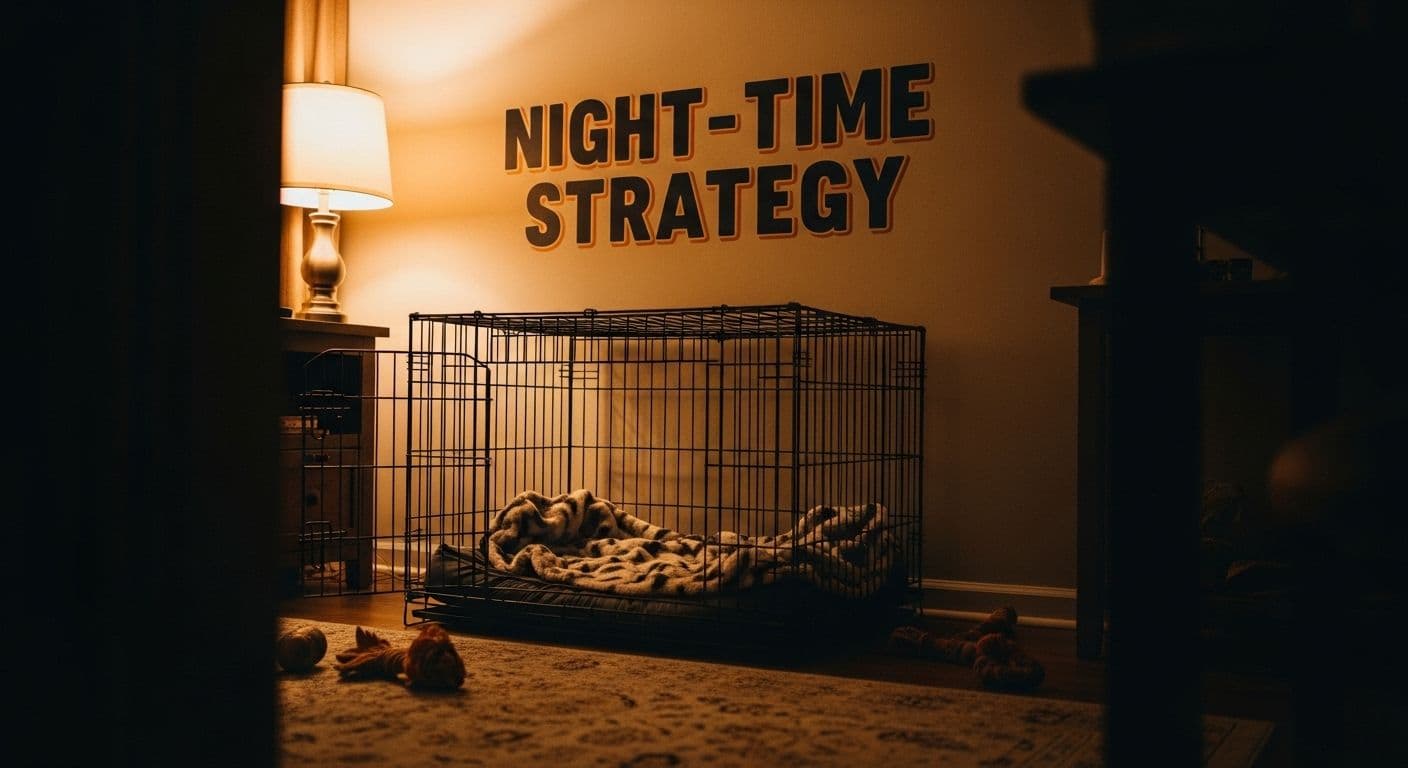Few things yank a dog parent out of bed faster than puppy whining in crate. One moment you’re drifting off, the next you’re wide-eyed, wondering, “What does he need now?” Whether the serenade begins the second you latch the door or erupts at 2 a.m., the goal is the same: calm your new sidekick without sacrificing sleep, or your sanity.
This friendly, practical guide breaks down why puppies pipe up, how to build a no-tears routine, and exactly what to do when your puppy won’t stop crying in crate, day or night.
Why Puppies Whine

Puppies may not speak English, but wow, do they know how to get the message across. When you hear puppy crying in crate at night, at least one of these reasons is usually behind the chorus.
The biological drivers
- Tiny bladders. A puppy’s “hold-it” tank is fun-size. Under four months, even super pups can’t last long.
- Hunger surges. Growth happens in sleep, and so does the munchies.
- Temperature swings. Littermates are portable heating pads; a cool crate can feel like Antarctica.
The emotional triggers
- Separation shock. Two days ago, your pup was a furry comma in a pile of siblings. Solo snoozing feels sketchy.
- Fear of confinement. Dogs are den animals, but only when the “den” predicts comfort, not isolation.
- Attention and it works. Rush to a puppy whimpering in crate, and you teach: Noise = Company. Clever little learners, huh?
Meet Basic Needs
Before tackling puppy whining in crate at night, double-check the essentials. A thirsty, hyper pup can out-howl any training plan.
Potty math
Remember this shortcut: Months of age = hours of bladder control + 1. A three-month-old pup needs a break about every four hours. Nights stretch a hair longer, but set at least one alarm so whining doesn’t become the potty bell.
Food timing
• Serve the last meal two to three hours before lights-out. Less digestion drama at midnight.
• Offer a small, protein-rich snack right before bed. A frozen, stuffed Kong is puppy Ambien.
Exercise vs. over-tire
Yes, a tired dog is a quiet dog, but an over-tired pup is like a toddler who skipped nap time. Aim for short play bursts, a quick leash stroll, and five-minute obedience sessions sprinkled through the evening. Mental puzzles beat a marathon in the “sleepy” department.
Train for Puppy Whining in Crate

Ignoring every whine can turn the crate into a battlefield. Instead, teach your pup the crate is a jackpot zone where calm behavior pays.
Step-by-step conditioning
- Open-door discovery. Toss treats inside the crate all day long. Let curiosity, not force, lead the way.
- Cue and treat. Once stepping in is easy, add a cue, “bed,” “kennel,” whatever you like, then reward two paws inside.
- Short closures. Shut the door for one second, feed through the bars, open. Next round, count to two, then five, ten, thirty.
- Leave the room. When pup chills for a full minute, step out for five seconds. Build to five minutes before longer absences.
Reward calm, not noise
• Treat only during silence, even if that silence lasts half a heartbeat.
• If a whine sneaks out, wait for a pause (any pause!) before you speak, touch, or open up.
Add nighttime cues
Puppy whining in crate at night often fades with soothing signals. A ticking clock, a T-shirt that smells like you, or gentle white noise can mimic littermate comfort and muffle household bumps.
Night-Time Strategy

A rock-solid bedtime routine is your fastest path to ending puppy crying in crate at night.
Evening checklist
- 7 p.m. Light meal
- 7:30 p.m. Quiet play or training
- 8 p.m. Outdoor potty trip
- 8:15 p.m. Wind-down chew inside crate (door open)
- 9 p.m. Last water
- 9:30 p.m. Short walk and final potty
- 9:45 p.m. Into crate with stuffed Kong, door closed, lights dimmed
Follow this schedule for a week and watch your pup’s eyelids get heavy on cue.
Scheduled potty run
Set an alarm; don’t wait for puppy crying at night. Carry or leash your groggy furball outside, praise, and pop back into bed. Keep lights low, voices softer than a lullaby, and skip playtime. You control the party, not the puppy.
Sharing a room, or not
Some pups snooze best with the crate by your bed; others lose their cool if they see you but can’t reach you. Start bedside for comfort, then slide the crate farther every few nights until it lands in its forever spot.
Troubleshooting Special Cases
Even textbook training hits bumps. Here’s how to handle persistent puppy whimpering in crate.
The puppy won’t stop crying in crate even after potty breaks
- Check fit. Big enough to stand, turn, stretch, nothing more. Too roomy invites a corner potty.
- Review enrichment. Swap plain bedding for a snuffle mat, safe chew, or frozen lick mat. Busy mouths equal quiet minds.
- Shorten confinement. Daytime stints longer than two hours without a human break? Trim them or add a playpen; hire a midday visitor.
Puppy crying in crate at night suddenly starts after success
Regression can spell teething pain, an ear infection, or life stress (hello, houseguests!). Rule out medical issues, then rinse and repeat the conditioning steps at a slower pace.
Dog crying in crate during the workday
Some adults nap through a work shift, many don’t. Pet-cam picking up nonstop barking? Call a dog walker, try daycare, or stagger neighbor visits. Remember: puppy crate training at night is easier than asking a bored adult to solo-crash for nine hours.
Separation anxiety red flags
Real separation anxiety goes beyond puppy whining in crate; the dog panics when left alone anywhere. Signs: puddles of drool, bent crate bars, self-injury. Time to bring in a certified behaviorist and vet. Medication plus slow desensitization often saves the day.
Putting It All Together
Crate success rides on predictable patterns, positive vibes, and fair expectations. Blend biology with behavior and you’ll trade that midnight opera for sweet silence.
A seven-day roadmap
- Day 1-2: Open-door games every hour; three short closed-door sessions; bedtime routine begins.
- Day 3-4: Closed-door duration hits three minutes; leave the room for 30-second bursts; one scheduled night potty.
- Day 5-6: Duration climbs to ten minutes with you out of sight; bedtime chew lasts till sleep; crate moves slightly farther if desired.
- Day 7: First full night with zero accidental rewards for whining. Celebrate with an epic morning walk!
Stick with the plan and puppy whining in crate will fade. The crate turns into a cozy den, you reclaim your REM cycles, and your dog builds a life skill handy for travel, vet visits, and unexpected curveballs.
A calm crate isn’t about toughness; it’s about teaching. Give your puppy clear info, and the quiet will come.
Conclusion
Solving puppy whining in crate isn’t magic, it’s management. Meet basic needs, craft positive routines, control night potty trips, and troubleshoot early. Do that and the crate shifts from a place of protest to a sanctuary of rest, for both you and your best friend.



